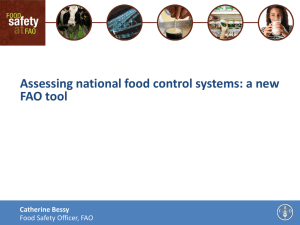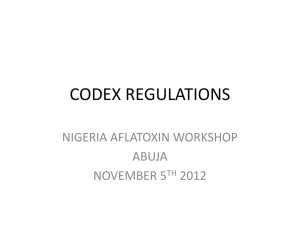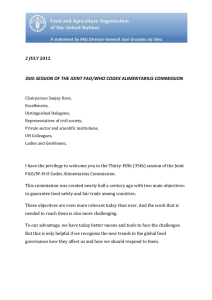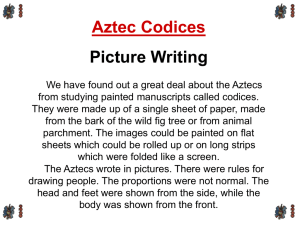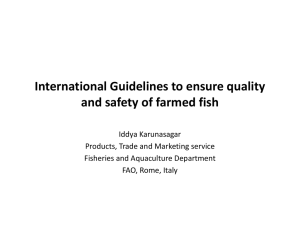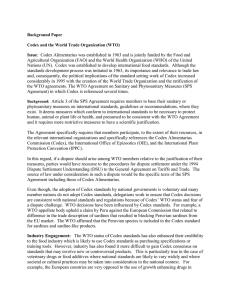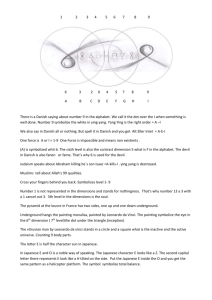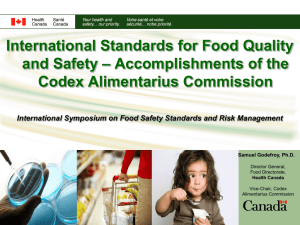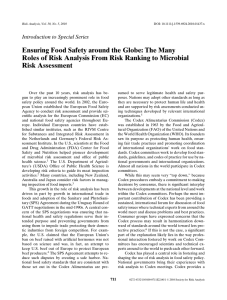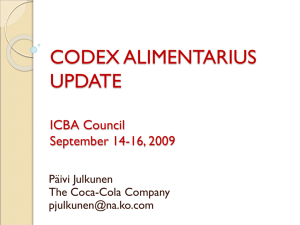An Introduction to Risk Analysis
advertisement
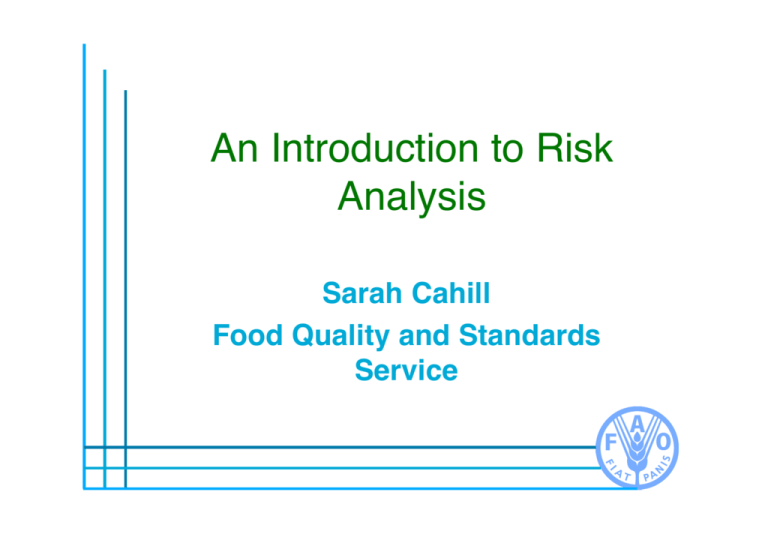
An Introduction to Risk Analysis Sarah Cahill Food Quality and Standards Service Hazards in Foods and Risk • Influenced by many factors all along the food chain • New trends – Globalization, urbanization, consumption patterns, production and processing technologies • New challenges – WTO agreements, Emerging/evolving pathogens Problems • Food safety - an increasing concern • Traditional food safety systems breaking down • Not able to cope with new trends and challenges Solutions • Move towards more science based and integrated systems • Holistic approaches – looking at food safety all along the food chain • Risk analysis key to achieving this – Essential part of transformation to a modern food safety system – Science - based approach Evolution of Risk Analysis • Used in on form or another for centuries • Structured food safety risk analysis developed in the 1990s • Activities of international organizations – FAO, WHO, Codex, WTO Codex activities FAO/WHO conference recommendation to Codex re use of science 1991 Adoption of statements of principles re use of science, food safety risk assessment risk analysis terminology and guidelines WTO SPS Agreement 1995 FAO/WHO Expert con. on RA 1997 1998 FAO/WHO Expert con. on RM 1999 FAO/WHO Expert con. on MRA FAO/WHO Expert con. on RC 2000 2002 2003 FAO/WHO expert cons. on MRA and RM Risk Analysis Risk management Risk assessment Risk Riskcommunication Communication Risk Management • Defines the problems • Establish links between foodborne disease and food safety • Articulates goals - to improve food safety, reduce burden of foodborne disease, continuous efforts, links actions to benefits • Defines whether risk assessment is needed and its purpose • Make decisions • Take actions Preliminary risk management activities Monitoring And Review RISK MANAGEMENT Implementation Evaluation of risk management options Risk Assessment Hazard Identification Hazard characterization Risk characterization Exposure assessment Risk Communication Interactive exchange of information and opinions among risk managers, risk assessors, consumers and other stakeholders Risk Analysis - Who Uses It? • A tool for use primarily by governments – protect consumer health – maintain confidence in internationally traded food (market maintenance) harmonization, mutual recognition, equivalence Risk Analysis – Who Uses It? • At international level – WTO - use risk assessment techniques developed by relevant international organizations – used by standard setting bodies, Codex, IPPC, OIE Risk Analysis and Codex • 2003 – Codex adopted “Working Principles for Risk Analysis for Application in the Framework of the Codex Alimentarius and related definitions” Risk Analysis Principles • • • • • • Consistent use Open and transparent Structured Evaluate and review as appropriate Effective communication Apply 3 components of RA within an overarching food safety RM framework • Availability of sci. data - different RM texts • Precaution is an inherent element • Consider developing country situations Risk analysis - Concluding Summary • Risk analysis and its components – Provide a tool for managing risks – Internationally recognized approach – Enables comparisons of control systems – Protect consumer health – International market acceptance of food products
